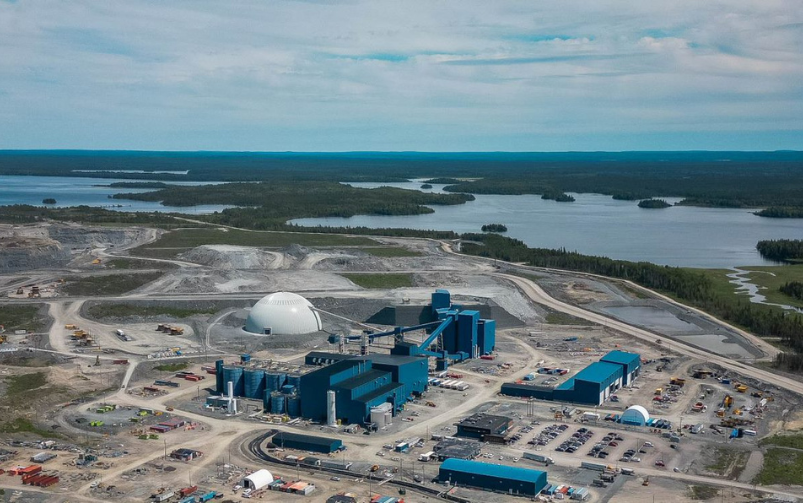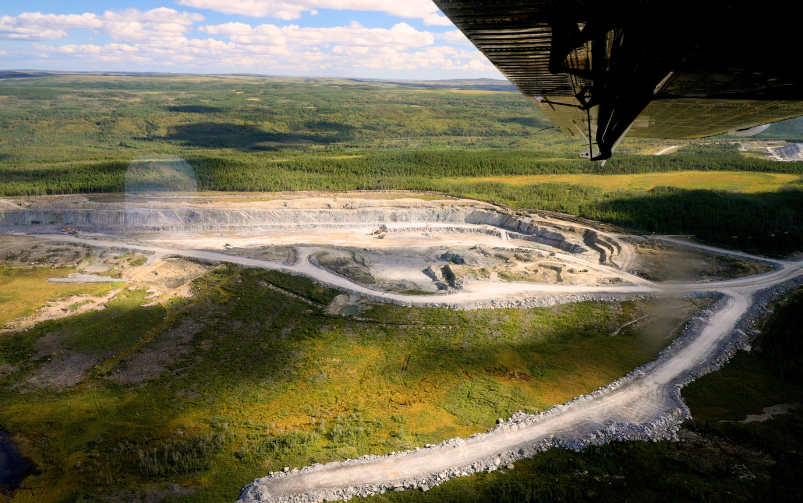Teck Resources' Trail Operations in British Columbia. Courtesy of Teck Resources.
On June 6, the Mining Association of Canada (MAC) released a new report called “The Mining Story – Canadian Mining Industry Facts and Figures,” which found that Canada’s mining industry has made a major comeback in recent years and is showing no signs of slowing down.
One of the key themes that emerged from this year’s report is that the country’s resources sector, which includes mining, quarrying and oil and gas extraction, is going strong, and accounted for 7.8 per cent of Canada’s gross domestic product (GDP) in 2022. This is more than other sectors like finance, construction, retail trade or transportation have contributed to the country’s economy.
Each area of the mining sector saw a significant increase in GDP contributions in 2022 compared to 2021, stated the report. These areas include extraction (a 21 per cent increase to $45 billion), mining services (a 50 per cent increase to $10.1 billion), primary metal/mineral manufacturing (a 13 per cent increase to $23 billion) and downstream metal/mineral manufacturing (a 23 per cent increase to $30.4 billion).
In a June 6 press release, MAC president and CEO Pierre Gratton said that the new figures signal a promising future for Canada’s mining sector and the country’s economy as a whole.
“The rebound in mineral and metal production is great to see, after a lengthy period of lower commodity prices,” he said. “As Canada and its allies seek to secure critical minerals and other mining products for the future to address national security and climate change goals, these numbers also tell us about how much wealth can come to Canada if we build out our mineral endowment.”
According to the report, Canada’s domestic mineral and metals exports (excluding coal) skyrocketed from $97.7 billion in 2020 to $138.5 billion in 2022, an increase of 42 per cent. The total value of Canadian mineral production also increased to $74.6 billion in 2022, up from $58.6 billion in 2021.
The increase in production values for non-metals and coal led to the increase of the total value of mineral and metal production, which has now quadrupled since the beginning of the new millennium. Through the mining industry, the country produces 60 different minerals and metals. Globally, Canada is the “top producer of potash, the second largest producer of niobium and uranium, and third largest producer of precious diamonds and palladium (by metal content),” according to the report.
The report also highlighted the crucial role that Canada’s mining industry plays by providing the minerals needed for the clean energy transition, and the need for more efficient regulations that will help it play its part more effectively on the world stage. Minerals and metals produced by the country’s mining sector are necessary components of clean technologies like electric vehicles, wind energy, photovoltaic solar cells and battery storage that will help with the transition to a lower-carbon economy and in the reduction of global carbon emissions.
“The economy of the future needs minerals and metals from Canada,” the report stated. “To provide the resources that are required, Canada must create an investment and regulatory environment that works. Given the increasing demand for critical minerals to achieve global carbon reduction, we need to bring new mines into production in the years ahead. This will require a regulatory regime that does not create barriers in mine development, but actively encourages them to proceed.”
The report featured several recommendations for the federal government to strengthen the country’s mining sector, which included investing in several areas such as infrastructure, exploration, mineral processing and workforce development, as well as continuing to support Indigenous training programs and government initiatives that promote diversity, equity and inclusion in the industry.
In 2022, more than 694,000 people worked in the mining sector across the country; 420,000 of these were directly employed in mining, and 274,000 indirectly, such as by providing equipment, technology and services to the sector. The report stated that safety has been steadily improving, with fatal injury rates declining by 23 per cent from 2012 to 2021. However, the report indicated that diversity continues to need improvement, with most of the mining industry still being predominantly white and male.
According to the report, recent collaboration efforts and commitments from the federal government, which include the Canadian Critical Minerals Strategy launched in December 2022, signal a positive way forward for the industry, but policymakers will need to keep up the momentum in order to maximize the benefits for Canada.
“The mining industry is an engine of Canada’s economy, but current demand for our natural resources presents us with opportunities on a scale we’ve never seen before,” Gratton said in the release. “Efficient and effective collaboration between government, industry and all communities of interest will ensure that our industry continues to benefit all Canadians.”
The report cautioned that to maintain the country’s position as a leader in mining, the sector’s key stakeholders will need to have access to modern trade and investment vehicles. Overall, the report signaled a healthy future for Canada’s mining industry and a wealth of opportunities—cautioning that this can only continue if the government and other stakeholders foster the right environment for competitiveness and growth.




